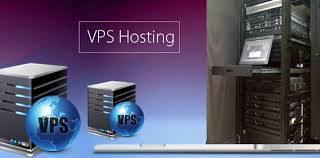Technology
How Artificial Intelligence Is Being Used in Education
Artificial intelligence (AI) is now integral to human existence as industries, including academia, have adopted this technology.
But AI is not new to the academic sector.
Students have consistently used AI-powered tools like Wolfram Alpha, Khan Academy, or essay writing services like EssayHub for their academic work.
Currently, academic institutions use AI-driven tools and platforms in several aspects of education. Some of these tools help students, while others improve teachers’ training methods.
In this article, we explore the application of artificial intelligence in academia and how it has changed the way students and teachers interact.
AI Tools Adapt to Student Needs
AI-powered tools often use machine learning (ML) technology to improve the user experience. In education, these tools can adapt the learning material to fit students’ performance or engagement levels.
For example, AI platforms can recommend reading material and essay help platforms like essayservice.com to students with a low average score in a subject.
In essence, AI-driven solutions can personalize students’ learning programs without the teacher’s help.
Besides, AI tools also identify students’ favorite reading materials from which they recommend similar books and academic resources.
AI Platforms Highlight Opportunities for Improvement
Artificial intelligence is a data-intensive technology. And as a result, every AI-powered tool gathers centralized data on students.
These critical performance data include:
- Classroom engagement
- Exam grades
- Test assessment
- Group participation
- Academic improvement
With this data, teachers and faculty staff can spot opportunities to improve the curriculum. In turn, this information enhances student engagement and other performance metrics.
And most importantly, data-driven learning reduces the volume of work teachers have to do since they have a bead on their students’ academic struggles.
Teachers Use AI to Improve Teaching Methods
Although AI detractors claim that the technology will replace teachers, the reality is the opposite: teachers need AI tools to improve their teaching methods.
With smart computing systems, teachers can generate detailed academic resources and course notes that cover their students’ deficiencies.
Besides, AI-driven tools allow gamification in the classroom, which significantly improves engagement and overall performance.
Also, hybrid learning formats need AI tools (like virtual labs) to function, so teachers must adopt AI-based remote learning platforms.
Educators Automate Routine Tasks with AI Tools
AI proponents always highlight that this technology eliminates the blandness of routine tasks. Some of these admin tasks include sending, sorting, and grading tests.
Although college essays contain subjective knowledge that requires a ‘human touch,’ AI tools can help teachers generate and issue these tasks.
On the bright side, AI-based grading platforms can go through students’ objective tests and provide results instantly.
Essentially, teachers can now use grading software and automate routine tasks, which gives them more time to focus on their students.
AI-Driven Education Provides Support Beyond the Classroom
In-class learning involves physical interactions with the teacher. But most students lose all contact with teachers after school hours.
But with AI-powered remote learning taking center stage, students now have unlimited access to educators, regardless of location.
Students can use communication tools to get real-time assistance from their teachers beyond school hours.
Besides, students can confide in teachers about non-academic issues like mental health and bullying without any inhibitions.
At the same time, AI tools can also direct students toward valuable academic resources when the teacher is not available.
Modern Learning Tools Use AI to Improve Student Success
We’ve already discussed how AI tools adapt to students’ individual needs. But how does this technology boost student success?
For starters, new AI-based tools provide real-time updates on a student’s interests. From these reports, the student gets access to educational materials tailored to their interests.
Secondly, AI-driven learning helps students to explore their creativity. Unlike antiquated one-size-fits-all learning solutions, AI tools use predictive models to direct students on the right career path.
And most importantly, AI platforms encourage fast-paced learning, which helps teachers identify struggling students before it is too late.
AI Levels the Field for Students
AI is the great equalizer because it doesn’t discriminate; the technology provides a level playing field for students of all backgrounds.
With AI-based real-time predictive models, teachers can adjust their curriculum to ensure every student is on board with the process.
Besides, AI tools enable students with disabilities to study on par with their peers. These disenfranchised students can use voice activation software, automated chatbots, and other learning aids to engage in the educational process.
Similarly, students suffering from social anxiety engage more in the learning processes using AI tools. And most importantly, AI tools support remote learning.
Conclusion
AI tools have changed the entire academic landscape. Educators now use AI-based tools to improve their teaching methods. They also rely on AI-powered platforms to cover routine admin tasks like grading and assigning classroom responsibilities.
Students also use AI tools to improve their classroom engagement and academic performance. AI-based educational platforms help students with difficult schoolwork.
Most importantly, AI tools bridge the gap between students and eliminate discrimination in academia.












